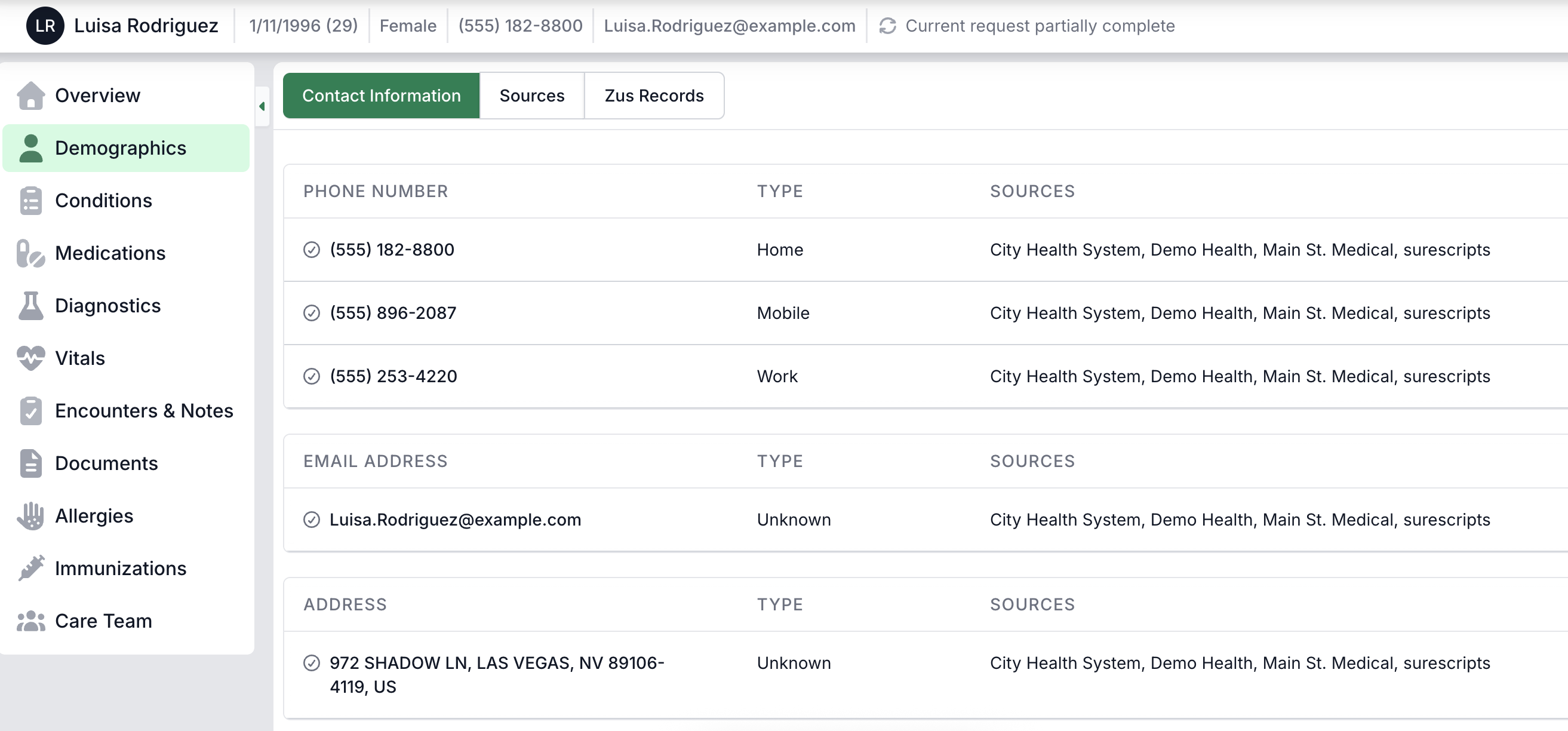Patient Matching
How matching works within the Zus UPI system
Our UPI service utilizes the following data elements in its patient matching algorithm:
- Name
- Date of birth
- Home address
- Phone number
- Email address
- Patient identifiers associated with the patient (e.g. SSN, EHR medical record number)
We use a scoring system to determine if two Patient resources represent the same human. Our name and street logic use fuzzy matching to account for misspellings, nicknames, and abbreviations.
For data retrieved from the network (as opposed to written by customers), the scoring system gives additional weight based on the expectation that the responding facility has conducted their own patient identity verification and matching review.
In addition to algorithmic matching, Zus routinely conducts a human review of matches with scores just above our thresholds.
Overmatches
Although our scoring is conservative, customers may still see occasional mismatches. Common patterns include:
- Family members, particularly:
- Pediatric twins and newborns
- "Baby Boy A" and "Baby Boy B"
- Parents' contact details included in patient demographics
- Pediatric twins and newborns
- Facilities that incorrectly merge patient records
- Facilities that respond with placeholder values for phone number, email, DOB, or SSN
- Note: Zus has checks in place for common placeholder values
Potential signals that two patients might have been inappropriately merged
Overmerges that fail programmatic review are often clear when reviewed by a human. We list some common patterns to look for below. ZAP UI users can compare demographics across sources side-by-side in our Demographics component.

Demographic Inconsistencies
- Patient name / contact information / MRN combinations that flip back and forth between records
- Gender mismatches
- Birth date discrepancies: Slightly off dates of birth, particularly common with twins born around midnight, premature infants, or clerical errors.
- Address or contact mismatches
- Inconsistent phone numbers or addresses, particularly if they shift frequently or appear identical across unrelated patients.
Clinical Red Flags
Even if demographic data appears consistent, clinical content can surface mismatched records. Look for:
- Implausible longitudinal data
- Diagnoses that are biologically inconsistent (e.g., obstetric history for a patient marked male)
- Pediatric growth data incompatible with recorded age or gender
- Rapid changes in chronic conditions (e.g., insulin-dependent diabetes disappearing between encounters)
- Medication or allergy contradictions
- Drastic medication history changes without clinical explanation.
- Allergies reappearing after being previously removed.
- Drug interactions appearing across records that should belong to different patients.
- Encounter patterns inconsistent with care setting
- Visits logged at geographically distant or unrelated facilities.
- Simultaneous appointments for similar conditions at different locations.
Reporting overmatches
Customers that identify an overmatch (or an undermatch) should file a support ticket. Please include the impacted UPID, and optionally any information that led you to conclude that the system had a matching error (e.g., incongruous clinical data). Zus Technical Support will review and split (or merge) the UPID as appropriate.
Updated about 2 months ago
